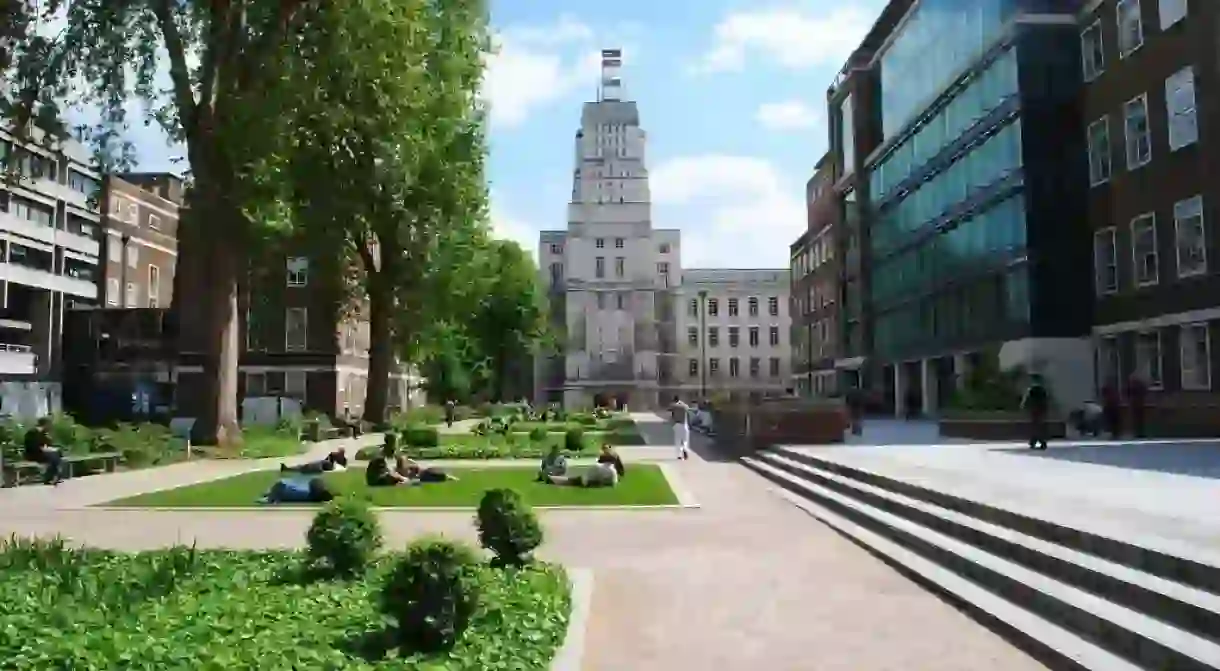The Literary Landmarks to Visit in and around Bloomsbury

Bloomsbury is often a byword for an intellectual movement which believed in the continued importance of the arts at the beginning of the 20th century. Now, however, a visit to Bloomsbury brings you very close to the intellectual powerhouse of London in the form of UCL and LSE. It is replete with splendid houses, academic buildings and beautiful green squares in which you can while away the time. While there are no official boundaries, Tottenham Court Road in the north and Holborn in the south are the extremes you may consider the area to fall into. Here, are the best literary landmarks in and around Bloomsbury.
Fitzroy Tavern
Pub, Pub Grub, Wine, Beer, Cocktails, Fast Food

Quite simply, the name of the pub comes from Fitzrovia and to visit the Fitzroy Tavern is to consume the essence of Bloomsbury. The tavern was originally opened in 1833 as a coffee shop and only truly opened as a pub in 1897 after it was converted by prolific businessmen William Mortimer Brutton. Over the years the drinking hole has proved a haunt for arty types including Dylan Thomas. The pub is now owned by the traditional chain Samuel Smith, so as well as a good value pint, you can also expect true British pub interiors at their best.
Senate House Library
Building, Library, University

Bloomsbury’s Blue Plaques
The blue plaques that you see on buildings throughout London are part of a project that started in 1866, to link the buildings of the present with the people of the past. You can find out where people were born, lived, worked and died, simply by looking up whenever you see a plaque.

Christina Rossetti
Park, Building
Charles Darwin
Building

Millicent Fawcett
Building
JM Keynes
Building
George Bernard Shaw
One of the most famous Irish playwrights of the early 20th century, Shaw is best known form his play Pygmalion which was later recreated into the popular musical My Fair Lady. He lived at this address from the mid-1880s almost until the end of the century before his career really took off. Living in London at around the same time as Oscar Wilde, Shaw stands as an example of the rich Anglo-Irish literary vein that ran through the capital at the turn of the 19th century. His plaque is shared with Virginia Woolf, who spent her life in and around Bloomsbury.
Virginia Woolf
Perhaps the most prominent name on this list of literary figures, Virgina Woolf’s London existence is widely documented and her name is as synonymous with the Bloomsbury Group as her own novels. She lived on the square between 1907 and 1911, beginning her first novel The Voyage Out (1915) at the address. Her plaque was erected in 1974 and sits below Bernard Shaw’s.














